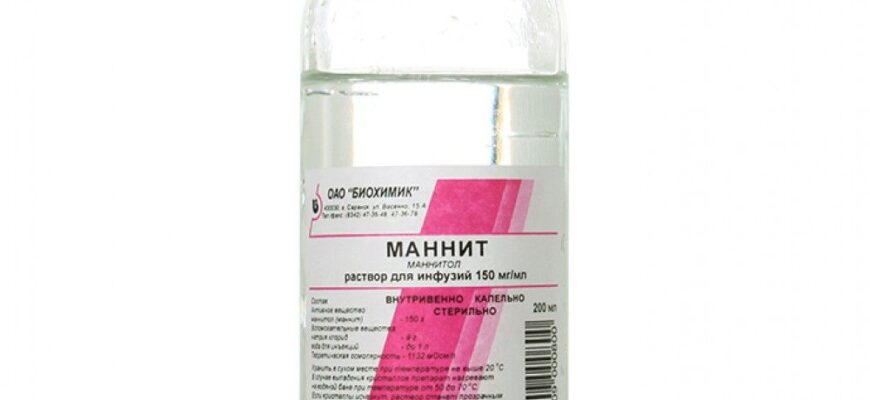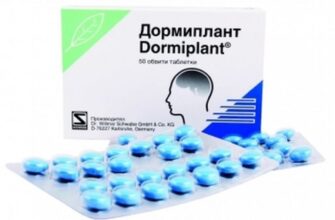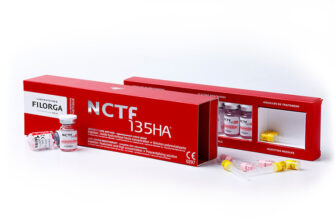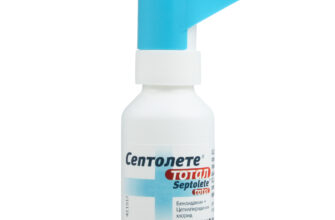Review of the best according to the editorial board. On the selection criteria. This material is subjective and does not constitute advertising and does not serve as a purchase guide. Before buying, you need to consult with a specialist.
This material is devoted to the treatment of edema, both general and local. Edema is a complex problem in modern medicine, especially in the diagnostic section, in primary health care. It can be lengthy and complex, taking a lot of the doctor's time and energy from the patient, and often from his funds. It is not for nothing that the chapter on peripheral edema is inevitably included in the reprint of the popular among doctors reference book by R.B.Taylor, 'Difficult Diagnosis'.
Therefore, this material can help patients think over the correct answers at a doctor's appointment, and learn about what drugs can be used to eliminate puffiness. Naturally, self-medication is strictly prohibited, and the information on medications in this article is for reference only. Only a doctor should prescribe drugs. But first, it is necessary to determine exactly what edema is.
- What is edema, and what they are
- General or generalized edema
- A heart
- Kidney
- Falling protein in the blood
- Local or local edema
- Inflammation
- Lymphatic drainage
- Varicose veins and insufficiency of veins in the legs
- Nervous cause
- Allergy
- No reason?
- Healed !!!
- The most dangerous edema
- Pharmacotherapy of edema
- Best cures for edema
- Diuretics, they are also diuretics
- Osmotic diuretics
- Mannitol (Mannitol)
- Advantages and disadvantages
- Acetazolamide (Diacarb)
- Advantages and disadvantages
- Thiazide diuretics
- Hydrochlorothiazide (hypothiazide)
- Advantages and disadvantages
- Loop diuretics
- Furosemide
- Advantages and disadvantages
- Potassium-sparing diuretics
- Spironolactone (Veroshpiron, Vero-Spironolactone, Veroshpilactone, Aldactone)
- Advantages and disadvantages
What is edema, and what they are
Edema, along with various types of rash, jaundice, pallor, almost always, at all times, were considered indicators of the disease. Old doctors said that cardiac edema occurs on the legs, and kidney edema – on the face, and this is really true. Edema is an increase in the size of any part of the body due to excess accumulation of fluid within the tissues. General swelling is called swelling, since there is no exact localization. Doctors classify all possible fluid retention into generalized and local edema.
The causes of edema can be different. This is a sudden increase in capillary permeability, a violation of the outflow of venous blood, as in varicose veins, lymphatic edema, a decrease in protein in the blood plasma. It is known that hungry people “swell with hunger”, that is, they swell. This symptom occurs when the plasma oncotic pressure is low, which maintains albumin. Therefore, they are also called protein-free edema.
General or generalized edema
The most dangerous in the long-term prognosis are general edema, or generalized. If they have arisen, then this almost always indicates a severe disruption in the body. In the appearance of general edema, either the heart, or the kidneys, or a critical decrease in protein in the blood plasma are to blame. Here are some of the most common situations:
A heart
Cardiac, or cardiogenic, edema occurs when there is not enough work of the heart ventricles. They simply are not able to develop such a force and frequency of contractions in order to pump the entire volume of fluid in a timely manner. Therefore, the main and most frequent diagnosis is heart failure, which is why it is called stagnant (stagnation of excess fluid).
Where does stagnation arise? In the pulmonary circulation, that is, in the lungs, and this can lead to their edema, which is called cardiac asthma. Heart failure is manifested by edema and in a large circle of blood circulation. Most often, the ankles begin to swell first, then the lower legs, then – the symmetrical edema rises to the level of the knees, and goes higher. Free fluid gradually accumulates in the abdomen, and ascites develops. In the area of the abdomen and lower back, the subcutaneous fat begins to swell, due to edema, the liver increases. Naturally, all this is accompanied by symptoms of dyspnea that increases with physical exertion, which then begins to disturb even at rest, and a sharp decrease in exercise tolerance.
Kidney
Edema in kidney pathology most often occurs when the cortical layer is disturbed, where the structural and functional units of the kidneys are located – nephrons, which produce urine. Of course, long-term diseases of the urinary system, for example, chronic pyelonephritis, can also lead to renal edema, but only if the result is hydronephrosis and kidney wrinkling. But most often nephritis and nephrosis, inflammation of the cortical layer of the kidneys, or glomerulonephritis are to blame for edema.
A large percentage of patients with renal edema are persons suffering from so-called systemic collagenoses. These are rheumatoid arthritis, systemic lupus erythematosus, systemic scleroderma and other diseases. Common edema can be caused by both chronic and acute renal failure. The difference is that with acute renal failure, acute failure, they occur much faster. Unlike cardiac edema, renal edema does not appear on the legs at the onset of their development, but on the upper half of the body. The classical localization is the eyelids, face, and symmetrically swollen hands. Renal edema occurs in the morning, and decreases in the evening.
Falling protein in the blood
Finally, edema due to a drop in protein in the blood plasma occurs with cachexia, alimentary protein deficiency, multiple organ failure, and appears in various severe systemic diseases. The reason may be nephrotic syndrome and prolonged starvation, advanced stages of malignant neoplasms with distant metastases, and other pathological processes.
Such a protein-free, or cachectic edema occurs when the total protein falls less than 60 g per liter, with a lower concentration limit of 65 g / l, and the concentration of albumin decreases to less than 35 g / l. Such edema, as a rule, begins on the legs, then spreads to the arms and trunk. Unlike cardiac edema, which is dense, or indurative, such hungry edema resembles a pillow in its softness, the skin above them becomes thinner and becomes pale.
Local or local edema
If the role of organ systems (cardiovascular, excretory) was mentioned above, then in the case of local edema, the level of damage is lower, we are talking about individual pathological processes. Organ systems usually function normally, and no chronic or acute failure is detected. What are these pathological processes? There are quite a few of them, it is even estimated that edema of the extremities is the fifth most common complaint when visiting a doctor.
Complaints about local edema are quite understandable, they are clearly visible, are immediately regarded by the patient as an undoubted sign of the disease, and their asymmetry is especially worrisome. Edema in women is the most worrisome, especially from a cosmetic point of view. Therefore, edema is that small group of visible symptoms and signs, when patients immediately go to the doctor, which cannot be said, for example, about toothache and other conditions.
Inflammation
Inflammation is well known to all. A banal boil is a classic inflammation that contains all five signs that have been known since antiquity. These are redness, a feeling of heat, pain, dysfunction and edema. With inflammation, swelling occurs, firstly, as a result of tissue damage, and the development of hyperemia, that is, blood flow to the site of inflammation. There is venous congestion, hyperemia in the veins, and the blood pressure in the vessels begins to exceed the pressure in the tissues that surround these vessels. Therefore, not blood from the tissues goes into the vessels, but vice versa.
Thus, the edema with inflammation lasts for several days in an acute process or longer in a chronic one, and then it resolves. Where there is inflammation, there will be edema, and it is manifested by an increase in local skin temperature and hyperemia, that is, redness. A classic example of such inflammatory edema can be acute arthritis with damage, for example, of the knee or elbow joint, phlegmon, or diffuse purulent inflammation of the subcutaneous tissue, and other diseases. It should be recalled that all signs of inflammation are clearly expressed only with normal immunity. In patients with HIV infection, or in those taking immunosuppressants, cytostatics or hormones, the inflammatory symptoms are pronounced obliterated.
Lymphatic drainage
Lymphostasis, or a violation of lymph flow in our time, and on the territory of our country, most often occurs with malignant neoplasms and metastases to the lymph nodes, since these formations squeeze the lymphatic vessels both from the inside and outside. But in hot countries, most often elephantiasis, or elephantiasis, occurs as a result of parasitic invasion by special worms – filaria, when they settle in the lymph nodes and disrupt the outflow of lymph.
Any lymphatic edema is localized very clearly and has good severity. They are almost always painless, with dense skin above them. In some cases, such edema can occur after surgery, if the patient has had regional lymph nodes removed, which happens almost exclusively with malignant neoplasms. In this case, the patient may have one-sided, rather massive and persistent lymphatic edema.
Varicose veins and insufficiency of veins in the legs
After general edema, edema on the legs with varicose veins takes the second place in the general classification of excess fluid in the body in terms of frequency of occurrence. Their cause is a violation of the activity of a kind of pump from the veins, their valves and muscles, which normally should pump blood upward, against gravity, into the inferior vena cava. If the venous valves stop working normally and are destroyed, then blood stagnates in these veins, again the pressure rises in them, they begin to expand, wriggle, nodes form and the blood goes back into the tissues, not having time to rise into large vessels. This leads to the occurrence of chronic venous insufficiency of the lower extremities. In addition to varicose veins, the cause of venous edema on the legs can be post-thrombotic disease, venous trauma, and so on. The classics of varicose veins are swelling of the legs and feet in the evening, a feeling of fullness and fatigue in the legs, and especially after a long standing all day, on their feet. Therefore, varicose veins is a professional pathology of surgeons, turners, and representatives of other, 'standing' professions. Then spider veins, varicose dermatitis join, and, finally, trophic ulcers appear.
Nervous cause
Swelling can occur due to 'nerves', but not due to stress or hysteria, but due to anomalies of autonomic vascular tone. It is known that the nerves of the autonomic system braid the vessels and regulate vasoconstriction, that is, vasoconstriction and vasodilation, that is, their expansion. If the contraction of the vessels is weakened, and they will almost always be dilated, then the vascular permeability will increase, and arterial blood from the capillaries will begin to intensively enter the tissue. This neural cause leads to angiotrophoneurosis, and appears in diseases such as central neuron paralysis (central paralysis). In such patients, the peripheral neuron lying in the anterior horns of the spinal cord is disinhibited and receives some autonomy without inhibitory impulses 'from above'. Nervous edema occurs with syringomyelia, with trigeminal neuralgia and other pathologies.
Allergy
Allergic edema is known to everyone. This is a rapidly onset condition, with swelling of the face, eyelids, tongue, lips, neck. Those places swell under the influence of a large amount of histamine, where there is a good blood supply, and loose subcutaneous tissue. Therefore, vasodilatation, a change in the permeability of the wall, leads to a significant increase in the volume of fluid and the appearance of specific allergic symptoms.
So, with Quincke's edema, intense lacrimation, itching in the nose and eyes, sneezing, profuse watery discharge from the nose, or rhinorrhea may occur. Also, quite often, allergic edema occurs on the limbs, in places of contact with a pronounced allergen, or urticaria appears.
No reason?
Yes, it happens. More precisely, there is no established reason yet. And then such edema is called idiopathic, that is, arising without a reason. Most often, young women, or a little older, but of childbearing age, are affected. Edema occurs in the summer, during the hot season, and especially on the legs. The second localization is fingers, eyelids. Edema usually increases towards the end of the day and reaches its maximum intensity in the evening. Typically, such swelling is characteristic of women who are overweight, and various autonomic reactions such as frequent 'hot flashes'. Nevertheless, the appearance of such idiopathic edema is associated with stress, possibly with prolonged use of diuretics, as well as during pregnancy.
Healed !!!
We are talking about medicinal edema. If a patient is prescribed corticosteroid hormones in large doses, if he takes beta-blockers to lower blood pressure or calcium blockers, then he develops, though not always, local edema. Most often, these are the feet and legs, face and forearms. In some cases, together with edema, skin redness, or hyperemia, can be detected. The second type of iatrogenic edema, which is caused by medical intervention, is the consequences of the removal of regional lymph nodes, as a palliative operation for malignant neoplasms.
The most dangerous edema
Of all the types of edema described, there are two of the most dangerous, which can be fatal. The first is cerebral edema. It is treated worst of all and mortality with this type of edema is the greatest. As a rule, the cause of cerebral edema is severe hemorrhagic stroke, subarachnoid hemorrhage with severe prolonged vasospasm. These are severe craniocerebral injuries, the presence of a mass in the cranial cavity.
A rapid increase in intracranial pressure leads to swelling of soft tissues, and there is nowhere for pressure to escape from the closed bone ball-skull. Therefore, there are various types of wedging, of which one of the most dangerous is the wedging of the cerebellar tonsils into the foramen magnum. All structures lying in the posterior cranial fossa experience severe compression, and death occurs from cardiac and respiratory arrest, since the most ancient and vital part of the brain is located nearby – the trunk and the medulla oblongata. It is they who are pinched in the large occipital foramen, it is in these structures that the vasomotor and respiratory center is located, which regulates respiration and blood circulation.
The second type of edema, which is also dangerous, but which can be successfully stopped even on an outpatient basis, is cardiac asthma, or pulmonary edema. In the left atrium, the pressure rises, since the left ventricle is not able to ensure the transfer of blood to the aorta, and pressure builds up in the pulmonary circulation, that is, in the lungs. Then the blood sweats under the influence of pressure in the lung tissue and a massive cough and choking begins. The patient begins to cough up large amounts of pink and frothy sputum. Treatment is reduced to a sharp decrease in venous return of blood to the heart. And here hot baths for hands and feet, the imposition of tourniquets on the limbs can help. The patient is injected with drugs that improve heart function, nitroglycerin, diuretics, and oxygen.
Pharmacotherapy of edema
We saw that there are a lot of reasons leading to edema, which cannot be said about the drugs that are used in this pathology. There are only two main groups of drugs – diuretics, or diuretics, as well as drugs of the venotonic class, that is, affecting the metabolism of the venous wall. Few diuretics are known, and much more venotonics, since they contain plant components. Today we will look at the group of diuretics in a drug review.
Diuretics can be used both for local and general edema, and drugs that improve venous outflow – only for swelling in the extremities, and if their cause is varicose veins, or chronic venous insufficiency. In this review, we will not consider agents for the treatment of allergic and inflammatory edema. There are already articles on drugs for allergies, on modern drugs for arthritis, on drugs from the NSAID group.
In our review of diuretics, we will consider only the most relevant and effective drugs registered in the Russian Federation. Each drug is first given an international non-proprietary name, or INN, and then the name of the original drug that first appeared on the market, if any, as well as synonyms for various commercial copies. The price range will also be given at which this drug can be purchased in all pharmacies of the Russian Federation. The price is valid for the fall of 2019.
Best cures for edema
| Nomination | a place | Name of product | price |
| Osmotic diuretics | 1 | Mannitol (Mannitol) | RUB 97 |
| 2 | Acetazolamide (Diacarb) | 267 r | |
| 3 | Thiazide diuretics | 441 r | |
| 4 | Hydrochlorothiazide (hypothiazide) | RUB 75 | |
| Loop diuretics | 1 | Furosemide | RUB 16 |
| POTASSIUM-SAVING URINE | 1 | SPIRONOLACTONE (VEROSSPIRON, VERO-SPIRONOLACTONE, VEROSHPILACTONE, ALDACTONE) | 167 r |
Diuretics, they are also diuretics
Diuretics are a universal solution for local and general edema. But, since they act systemically, the main goal is to reduce the total excess of fluid in the body. At the beginning of treatment, it is imperative to follow the rules of forced diuresis. This means that the patient must monitor the amount of fluid they consume. In this case, the volume of excreted urine should be greater than the total fluid intake, at least by 200-300 ml per day. At the same time, it is necessary to maintain a stable body weight, and avoid drinking a large amount of water. Therefore, it is necessary to start treatment with diuretics with small doses, and the doctor increases this dosage as necessary. As soon as the edema is eliminated, or their volume is significantly reduced, the dose of diuretics is either reduced, or they are canceled altogether. What are diuretics?
Osmotic diuretics
They are diuretics that work exclusively on the physical effect of osmosis. Osmosis is the process of penetration of liquid molecules towards a higher concentration, in the presence of a semipermeable membrane separating them. These drugs are loved by doctors, anesthesiologists and resuscitators, they are well filtered by the kidneys, are not absorbed inside, improve the osmolarity of blood plasma, and can affect the state of electrolyte balance. In total, two such drugs are known. Mannitol, or Mannitol, is only used intravenously and is used almost always in a hospital, such as a neurosurgery department. Doctors like to prescribe the second drug on an outpatient basis to reduce intracranial pressure, and this is the well-known Diakarb. Let's consider their effects separately.
Mannitol (Mannitol)
Popularity rating: 4.9
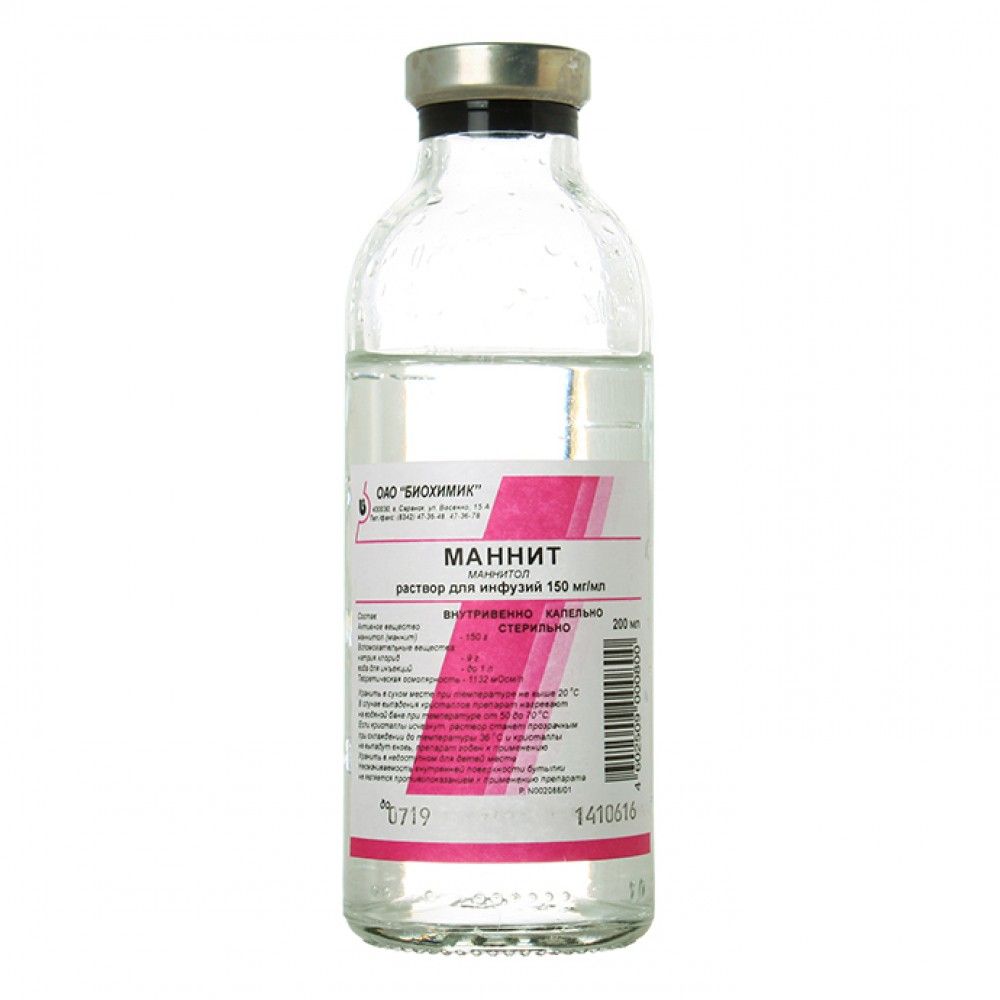
The magnet is used only in severe conditions. These are cerebral edema, glaucoma, acute renal failure and status epilepticus, barbiturate poisoning, that is, all those conditions that lead to a rapid increase in intracranial pressure. Therefore, Mannitol can be considered a means of salvation from death, without any exaggeration. It is administered only intravenously, and in order to eliminate the general increase in the amount of fluid, it is used together with loop diuretics, for example, with furosemide.
Since the treatment is carried out under the strict control of hemodynamics and water-electrolyte balance, Mannitol is used mainly in intensive care. Before use, the medicine is heated in a water bath to body temperature, especially if a lot of it is injected. One package of Mannitol (400 ml bottle) costs about 100 rubles, but no one buys it in pharmacies, since it is always available in hospitals, but on an outpatient basis, it is not prescribed 'home'. Both Mannitol and Mannitol are domestically produced drugs.
Advantages and disadvantages
Despite the fact that this is salvation from death, it is contraindicated in hemorrhagic stroke and subarachnoid hemorrhage, with severe forms of dehydration, with a sharp drop in the blood concentration of potassium and sodium together with chlorine, with acute tubular necrosis. Mannitol can cause side effects as well. These are cramps and dry mouth, thirst and a drop in pressure, tachycardia and even hallucinations. That is why the medicine is used only in a hospital, as a last resort, for patients with glaucoma it can be dripped in a day hospital, but also under the supervision of a doctor.
Acetazolamide (Diacarb)
Popularity rating: 4.8
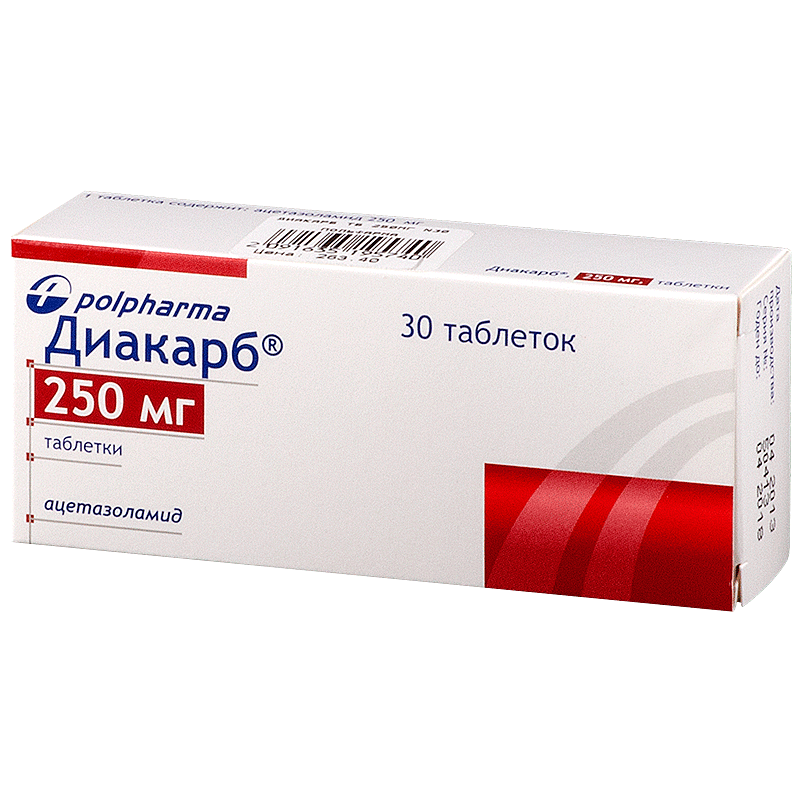
This drug acts on a single enzyme, carbonic anhydrase, in the kidneys. As a result, the reabsorption of bicarbonate, sodium and potassium into the blood decreases. The drug increases the pH of urine, that is, it reduces its acidity, increases urine output, and leads to a decrease in intracranial and intraocular pressure. Diacarb has anticonvulsant activity. Therefore, this remedy is taken not only for edema, but also for glaucoma, epilepsy, and intracranial hypertension syndrome. In case of edema, the agent is prescribed once every other day, with a one-day break. For Diakarb, the phenomenon of the 'limiting' dose is interesting, that is, a further increase in the dose does not increase the diuretic effect. Diacarb is available in tablets of 250 mg, and a pack of 30 tablets of the domestic company Akrihin will cost from 220 to 300 rubles.
Advantages and disadvantages
For neurologists, Diakarb is considered a panacea for any suspicion of increased intracranial pressure, a diffuse headache, or pressing pain in the eyes. But you should take into account its side effects. Quite often, while taking Diakarb, appetite falls, taste is disturbed, dizziness appears, and a feeling of fatigue develops. The number of common side effects is very high, but fortunately, many of them are rare. So, the rare 'side effects' include aplastic anemia, transient myopia, photosensitivity.
You should also take into account a lot of contraindications. This is liver failure with a risk of encephalopathy, blood acidification or metabolic acidosis, pregnancy, lactation and children under 3 years of age, low concentration of corticosteroid hormones, or hypocorticism, and Addison's disease. Diacarb should be used with great caution in patients with diabetes mellitus, as they have an increased risk of hyperglycemia. With long-term administration of Diakarb, drowsiness may occur, therefore it is undesirable to drive a car and work with dangerous mechanisms while taking the drug.
Thiazide diuretics
Popularity rating: 4.7
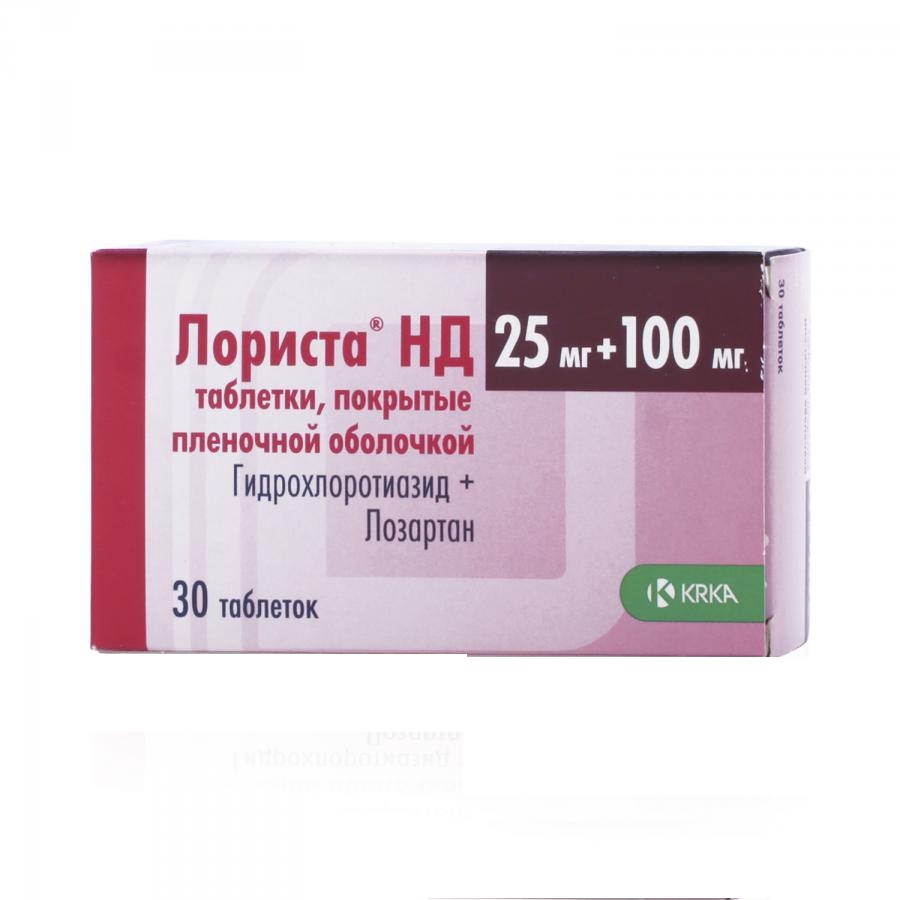
Thanks to these diuretics, without exaggeration, life expectancy has increased in very many, many hundreds of thousands and millions of elderly people, since a drug such as hydrochlorothiazide and indapamide are included in many combined antihypertensive drugs in which the active substance, for example, an angiotensin receptor blocker, is enhanced by a diuretic. (Lorista N, Gizaar, Vazotenz, Lozap plus).
They have a diuretic effect, excrete sodium from the body, and act at the level of the nephron tubules. They increase the excretion of potassium and magnesium in the urine, but decrease the excretion of calcium and uric acid from the body. They are used as a diuretic for cardiac edema, and especially for edema in patients with hypertension, but not as an ambulance, but for planned therapy.
They are not recommended for patients with impaired renal function, since against its background they can provoke interstitial nephritis and cause or aggravate renal failure. Since all these drugs remove potassium, they are not recommended to be taken with a low concentration of potassium in the blood, or hypokalemia, as well as with gout. However, if they are used in small dosages, as an additive to antihypertensive drugs, then the risk from taking is much lower.
Hydrochlorothiazide (hypothiazide)
Popularity rating: 4.6

In general, all diuretics are inexpensive drugs, and Hypothiazide is a typical drug in this regard. Hypothiazide can be purchased at prices ranging from 47 to 120 rubles. per pack, tablets of 100 mg, No. 20. Hypothiazide is produced by the Hungarian company Hinoin, and it is considered a diuretic of average strength. It is stronger than the potassium-sparing diuretic Veroshpiron and weaker than loop diuretics such as Furosemide. We will talk about them further.
The merit of Hypothiazide can be considered the lack of influence on the acid-base state of the body. It also removes magnesium, but retains calcium and uric acid salts in the body. The diuretic effect begins in an hour and a half, reaches its peak in 4 hours, and after 10-12 hours it decreases. The drug is able to gently lower blood pressure due to a decrease in the volume of circulating fluid in the body, and it also reduces the effectiveness of vasoconstrictors, for example, nose drops containing alpha-adrenergic agonists.
It is indicated for use, first of all, with arterial hypertension, with edema, and widespread, with portal hypertension and during treatment with corticosteroid drugs to prevent edema (as a means of prevention). The agent is also prescribed to prevent the formation of calcium-containing stones in the urinary tract.
Hypothiazide is used in adults from 25 to 50 mg once a day, as monotherapy, or together with other antihypertensive drugs. Sometimes a dosage of 12.5 mg is enough. To achieve the optimal effect, it may take a month of treatment, and after the end of the course, the hypotensive effect lasts for a week, which is very convenient. As for edema, first you need to give a 100 mg tablet once a day, or once every other day, and then – a small dose, as prescribed by a doctor.
Advantages and disadvantages
The undoubted advantage of the drug is its mild action, low price, and the ability to take it only once a day, or every other day. Side effects should also be considered. This is a decrease in potassium, magnesium, an increase in calcium in the blood plasma with all the specific symptoms: from fatigue and excitability to muscle cramps. This exacerbation of cholecystitis and pancreatitis, dizziness, headache, occasionally occurring leukopenia and thrombocytopenia, and even urticaria and respiratory distress syndrome. It may be when taking Hypothiazide and a decrease in potency. An overdose can cause tachycardia and a decrease in blood pressure, due to loss of potassium, spasms of the calf muscles, nausea and vomiting can develop. The drug can interact with many other drugs. It enhances the effect of cardiac glycosides, and its effect on diuresis is weakened when taken together with non-steroidal anti-inflammatory drugs.
Loop diuretics
It is these diuretics that are known to everyone, since the well-known Furosemide, or Lasix, belongs to the loop diuretics. These funds are quite powerful, but short-lived. They also excrete sodium, while increasing the release of the hormone renin, and the activity of the angiotensin-aldosterone system increases. A big plus of these diuretics is considered the ability to use them as an emergency aid in the treatment of edema in chronic heart failure, with massive edema on the legs, with ascites and with pulmonary edema.
All forms of loop diuretics are available in both ampoules and tablets. They are used intravenously, intramuscularly, and orally. However, care must be taken, since the introduction of furosemide in large doses, especially in elderly patients with cardiac arrhythmias, due to a drop in the concentration of potassium in the blood plasma, can cause an attack of atrial fibrillation, and in young patients – cramps, or night cramps in the calves also associated with potassium washout. Therefore, it is advisable to take potassium supplements together with loop diuretics.
Furosemide
Popularity rating: 4.9
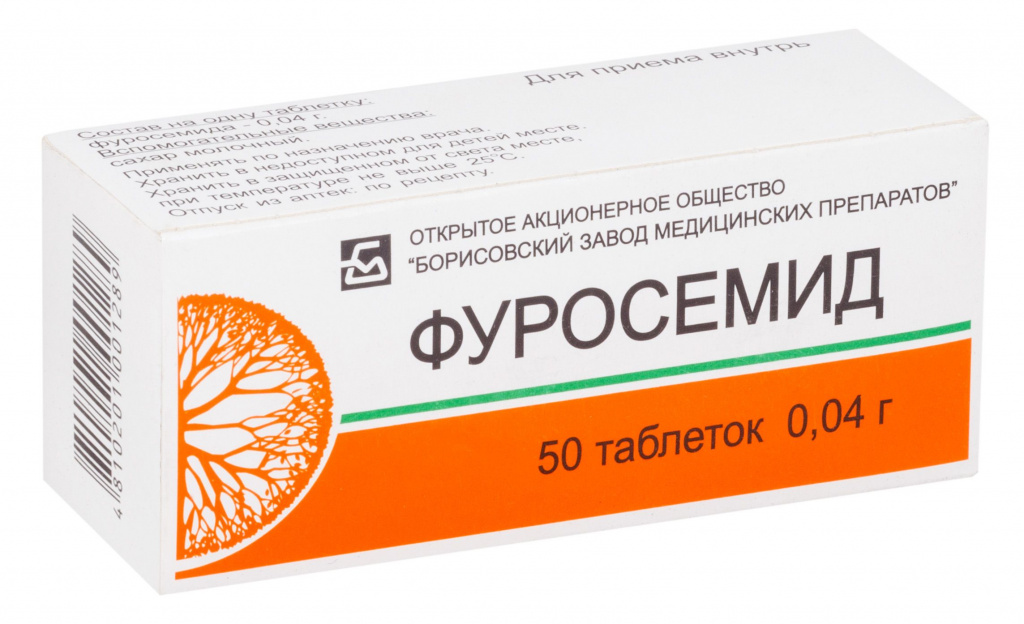
Furosemide, aka Lasix, is the reference and most famous diuretic. Its cost is not high. Furosemide in a standard dosage of 40 mg in tablets is inexpensive, and can be purchased even for less than 20 rubles. for 50 tablets. Since it is constantly included in the list of vital and essential medicines (LVNLS), many pharmaceutical companies produce it. These are Macedonian Alkaloid and Bulgarian Balkanfarma, Belmedpreparaty and Biosynthesis, Dalkhimpharm and Veropharm, Canonpharm production and Moscow Endocrine Plant, Novosibkhimpharm and Ozone, Danish Nikomed and Bulgarian Farmkhim, the list goes on and on.
The popularity of Furosemide is that it is a loop diuretic that acts quickly, strongly, and for a short duration. This is very important when providing an ambulance. The drug belongs to highly active diuretics, and quickly helps to restore fluid balance in diffuse edema, and even with advanced chronic heart failure, with liver cirrhosis, and with nephrotic syndrome. It is used constantly in an ambulance for cardiac asthma and cerebral edema, in pregnant women with eclampsia, it can reduce blood pressure in hypertensive crisis. In short, it is a really very good, high-quality and cheap drug.
It is necessary to take Furosemide for edema at first half a tablet, from 20 mg, once a day. Then, if necessary, under strict medical supervision, you can increase the dosage, taking into account the control of laboratory analyzes of potassium, sodium, magnesium and chlorine. It should be remembered that the maximum oral dose is 6 mg per kilogram of body weight, so the maximum allowable dosage for a 100-kg adult is 600 mg per day, that is, 15 tablets! But this is the limiting dosage, and in practice it is almost never prescribed, and if it is prescribed, then in hospitals under strict control. In addition, such a high dosage is obtained, seeing the ineffectiveness of small doses, gradually increasing it.
Advantages and disadvantages
The fast and active Furosemide has its drawbacks. It should not be prescribed for severe hepatic and renal failure, with obstruction of the urinary tract, including urolithiasis, with stenoses and cicatricial adhesions in the urethra and bladder. It is not indicated for gout and hyperuricemia, high sugar levels, and hyperglycemic coma. It should not be used for decompensated valvular heart disease – with mitral and aortic stenosis. It is contraindicated in pancreatitis, and acute myocardial infarction.
There is also a whole list of diseases and conditions in which Furosemide can be used, but only with great care. These are prostatic hyperplasia, diabetes, cerebral atherosclerosis, pregnancy and lactation. For pregnancy and the period of breastfeeding, a well-known rule is observed. Any medicine is prescribed only when the potential benefit of the treatment outweighs the potential risk to the unborn child.
Furosemide has many side effects, and they are an extension of its strengths: speed and strength. This is a sharp drop in pressure, collapse and tachycardia, the occurrence of cardiac arrhythmias. These are dizziness and drowsiness, dry mouth and thirst, decreased potency and general dehydration. But most often, the rapid intake of furosemide (with intravenous administration) causes a sharp decrease in potassium in the blood plasma, and in elderly patients with rhythm disturbances this can lead to a paroxysm of atrial fibrillation. Therefore, when prescribing loop diuretics, it is necessary to immediately compensate for the potential loss of potassium and magnesium by prescribing appropriate drugs (Panangin). It is clear that an overdose of furosemide can lead to a sharp drop in blood pressure and shock, to the development of acute renal failure with anuria, or with a complete absence of urine, to traumatic processes against the background of thickening of the blood, and so on. Conclusion: Furosemide is very effective and beneficial, but only in experienced hands.
Potassium-sparing diuretics
These drugs are called potassium-sparing diuretics. We have already said enough about the fact that the above diuretics excrete sodium, but they also lead to the loss of potassium. Therefore, the emergence of a diuretic that prevents potassium loss was a real salvation for compromised patient groups.
Of course, these diuretics have a weak diuretic effect, but at the same time they retain potassium, and are indicated for the treatment of a wide variety of general edema. These are nephropathy, gout, cirrhosis of the liver and diabetes mellitus, heart failure. These drugs are taken orally, but you should not expect any pronounced effect from them. They add the amount of urine excreted not at all “at times”, but somewhere about 1/5 of the original. That is, the patient, having taken the drug, will urinate not 100%, as before, but 120%. In addition, the range of potassium-sparing diuretics is limited to practically the only drug – spironolactone.
Spironolactone (Veroshpiron, Vero-Spironolactone, Veroshpilactone, Aldactone)
Popularity rating: 4.8
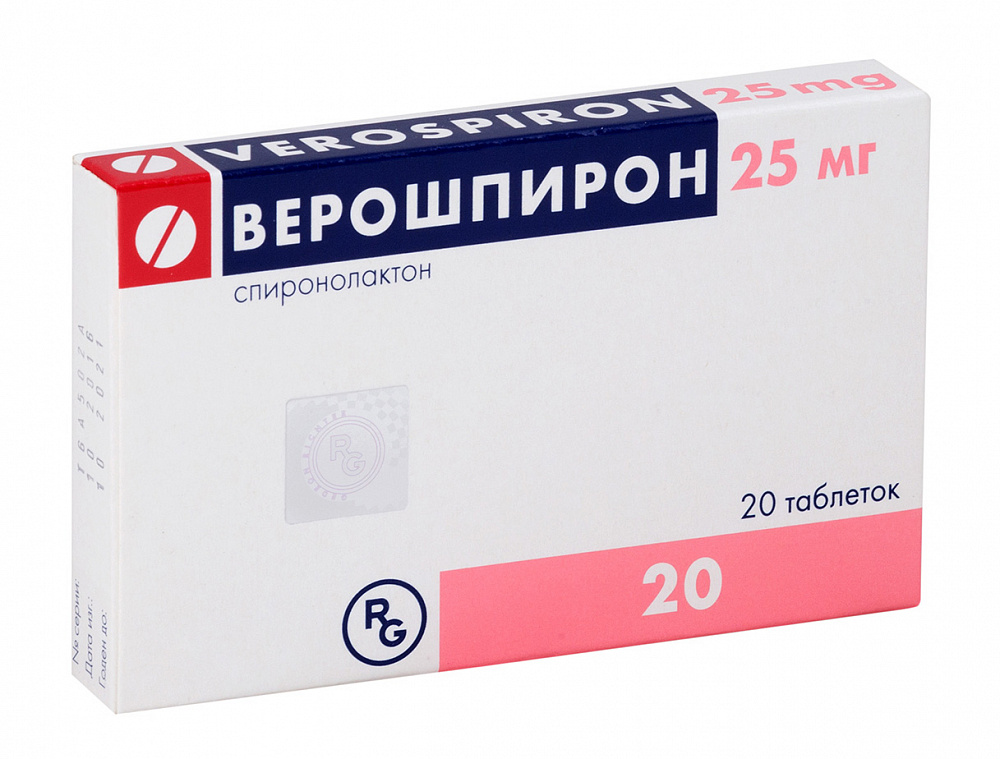
Verospiron, in comparison with Furosemide, is a significantly weaker and 'mild' diuretic. Its cost is low. A pack of 20 tablets of 25 mg will cost from 63 to 100 rubles. Veroshpiron is produced by the Hungarian company Gedeon Richter. The strength of Veroshpiron is that it does not remove potassium from the body. Its mechanism of action is somewhat different, it competes with an antagonist of the hormone aldosterone, which is called antidiuretic hormone. In the renal tubules, spironolactone increases the release of sodium and chlorine into the urine.
Spironolactone reduces the acidity of urine, therefore it can be used in the complex therapy of urolithiasis. It also slightly lowers blood pressure, but not immediately, but somewhere on the third or fifth day of treatment. It is indicated for use in arterial hypertension, but always together with other drugs. If we are talking about edema, then this is primarily chronic heart failure, but it needs to be supplemented with other drugs prescribed by a cardiologist. Since it does not 'fill up' potassium, it is safer for various rhythm disturbances in the setting of heart failure.
An important indication is secondary hyperaldosteronism, ascites and cirrhosis of the liver, which is accompanied by edema. It is also the primary high level of aldosterone, or Cohn's syndrome, but it is prescribed only shortly, and before surgery. Veroshpiron is prescribed in a dosage of 50 to 100 mg once a day, followed by an increase in the dose, but not more than 200 mg. The highest dosage is required for hyperaldosteronism, and a pronounced decrease in potassium in the blood, up to 400 mg per day in two or three doses. The course of treatment for edema associated with heart failure is about a week, as long as possible, but at the discretion of the doctor.
Advantages and disadvantages
The main advantage of veroshpiron is the ability to conserve potassium, and this compares favorably with its powerful, but rougher looped 'colleagues'. However, the drug can have side effects such as nausea, lethargy, decreased plasma leukocytes, increased creatinine and uric acid with urea, potassium retention, and even coarsening of the voice in women and gynecomastia in men. In some cases, the drug can cause muscle spasm and hair loss. Veroshpiron can work with other medications. Therefore, it is advisable to prescribe it in short courses, in recommended dosages and under the supervision of a specialist, in order to avoid incompatibility and side effects.
The popularity rating is based on the analysis of demand data from the wordstat.yandex.ru service.
Attention! This rating is subjective and does not constitute an advertisement and does not serve as a purchase guide. Before buying, you need to consult with a specialist.

